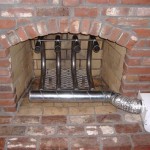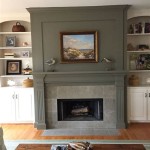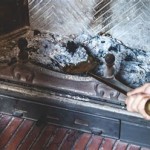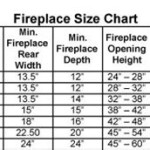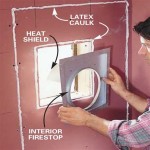Patio Stone Fireplace Designs: A Comprehensive Guide
Outdoor living spaces have increasingly become extensions of the home, providing areas for relaxation, entertainment, and connection with nature. A key feature that elevates any patio is a fireplace, offering warmth, ambiance, and a focal point for gatherings. When considering materials, patio stone stands out for its durability, aesthetic versatility, and natural appeal. This article explores the diverse world of patio stone fireplace designs, encompassing various styles, stone types, and construction considerations to help homeowners create the perfect outdoor hearth.
Patio stone fireplaces offer numerous benefits. Their inherent durability ensures longevity, withstanding harsh weather conditions and requiring minimal maintenance. The natural beauty of stone adds a touch of elegance and rustic charm to any outdoor setting. Furthermore, stone is fire-resistant, providing a safe and reliable construction material for a fireplace. The design possibilities are virtually limitless, ranging from sleek, modern structures to rustic, traditional hearths, allowing for seamless integration with existing patio aesthetics.
Choosing the Right Patio Stone
The selection of stone is paramount to both the aesthetic and structural integrity of a patio fireplace. Several types of stone are commonly used, each possessing unique characteristics in terms of appearance, durability, and cost. The following are among the most popular choices:
Fieldstone: Fieldstone is a naturally occurring stone collected from fields and riverbeds. Its irregular shapes and varying colors create a rustic and organic appearance. Fieldstone is known for its durability and resistance to weathering, making it a suitable option for outdoor fireplaces. Sourcing fieldstone locally can often reduce costs and contribute to a more sustainable project.
Flagstone: Flagstone is a sedimentary rock that is easily split into flat, layered pieces. It is available in a range of colors, including blues, browns, reds, and grays. The flat surface of flagstone makes it ideal for creating smooth, consistent veneers for fireplace surrounds. Different types of flagstone vary in hardness and porosity, so selection should consider the climate and anticipated use.
Ledgestone: Ledgestone is a type of natural stone that is cut into thin, rectangular pieces and stacked to create a textured, layered appearance. It offers a modern aesthetic while retaining the natural appeal of stone. Ledgestone is often used in contemporary fireplace designs due to its clean lines and sophisticated look. It is generally available in various colors and textures, and its relative ease of installation makes it a popular choice.
River Rock: River rock, as the name implies, is smooth, rounded stone collected from riverbeds. Its smooth texture and varied colors add a natural and soothing element to any patio space. River rock can be used as an accent material, incorporated into the fireplace surround, or used to create a decorative base. Due to its rounded shape, it is typically not used as the primary structural material, but rather as a supplementary decorative element.
Cultured Stone (Manufactured Stone Veneer): Cultured stone is a manufactured product that mimics the appearance of natural stone. It is made from a mixture of cement, aggregates, and pigments. Cultured stone offers several advantages over natural stone, including lower cost, lighter weight, and greater consistency in size and color. It is easier to install than natural stone and is a suitable alternative for projects with budget constraints or weight limitations. However, cultured stone typically lacks the inherent durability and unique character of natural stone.
When selecting stone, it is crucial to consider the overall aesthetic of the patio and the desired style of the fireplace. The color, texture, and shape of the stone should complement the existing landscape and architectural features. It is also essential to assess the stone's durability and resistance to weathering in the specific climate. Consulting with a landscape architect or experienced stone mason can help ensure the optimal choice is made.
Design Considerations for Patio Stone Fireplaces
Beyond the choice of stone, several design considerations will influence the final appearance and functionality of the fireplace. These considerations include the overall style, dimensions, fuel type, venting system, and surrounding landscape.
Style: Patio stone fireplaces can range from rustic and traditional to sleek and modern. A rustic fireplace typically features irregular stone shapes, textured surfaces, and a natural, unrefined appearance. This style often incorporates fieldstone or river rock to create a sense of authenticity and connection to nature. A modern fireplace, on the other hand, often incorporates clean lines, smooth stone surfaces, and a minimalist aesthetic. Ledgestone or flagstone are often used in modern designs to create a sophisticated and contemporary look.
Dimensions: The size of the fireplace should be proportional to the size of the patio and the surrounding landscape. A fireplace that is too large can overwhelm the space, while a fireplace that is too small may not provide adequate warmth or visual impact. Consider the number of people who will typically gather around the fireplace and the desired height and width of the firebox. It is helpful to create a scaled drawing or use visual aids to determine the optimal dimensions before starting construction.
Fuel Type: The choice of fuel type will significantly impact the design and functionality of the fireplace. Wood-burning fireplaces offer the traditional ambiance and crackling sound of a real fire, but they require a chimney for venting and a source of firewood. Gas fireplaces are more convenient, offering instant ignition and adjustable flame height. They can be fueled by natural gas or propane, and they may require venting depending on the specific model. Electric fireplaces are the easiest to install, requiring only a power outlet. However, they do not provide the same warmth or ambiance as wood-burning or gas fireplaces. Each fuel type has specific requirements and limitations that must be carefully considered during the design process.
Venting System: Wood-burning fireplaces require a properly designed chimney for safe and efficient venting of smoke and combustion gases. The chimney must be tall enough to create adequate draft and should be constructed from durable, fire-resistant materials. Gas fireplaces may require venting, depending on the model. Ventless gas fireplaces are available, but they are not recommended for enclosed spaces due to the potential for carbon monoxide buildup. Electric fireplaces do not require venting.
Surrounding Landscape: The fireplace should be integrated seamlessly into the surrounding landscape. Consider the placement of seating areas, pathways, and plantings. Incorporating natural elements, such as stone benches, planters, and water features, can enhance the overall aesthetic and create a cohesive outdoor living space. The surrounding landscaping should complement the style of the fireplace and create a welcoming and inviting atmosphere.
Construction and Installation Considerations
Constructing a patio stone fireplace requires careful planning, attention to detail, and adherence to local building codes. It is essential to consult with a qualified contractor or stone mason to ensure the project is completed safely and correctly. The following are some key construction and installation considerations:
Foundation: A solid and level foundation is essential for the structural integrity of the fireplace. The foundation should be constructed from concrete and should extend below the frost line to prevent movement due to freezing and thawing. The size and depth of the foundation will depend on the size and weight of the fireplace.
Firebox: The firebox is the heart of the fireplace, where the fire is contained. It should be constructed from fire-resistant materials, such as firebrick or refractory cement. The dimensions of the firebox should be appropriate for the desired fuel type and the size of the fireplace. It is important to ensure adequate ventilation and airflow within the firebox to promote efficient combustion.
Chimney: For wood-burning fireplaces, the chimney must be constructed from durable, fire-resistant materials and should be properly insulated to prevent heat loss. The chimney should be tall enough to create adequate draft and should be capped to prevent rainwater and debris from entering. Regular cleaning and maintenance are essential to prevent chimney fires.
Mortar: The mortar used to bond the stone together should be specifically formulated for outdoor use and should be resistant to weathering and temperature fluctuations. Type N mortar is a common choice for outdoor stone projects. The mortar joints should be carefully filled and tooled to create a durable and aesthetically pleasing finish.
Safety: Safety should be the top priority throughout the construction process. Wear appropriate safety gear, such as safety glasses, gloves, and dust masks. Follow all local building codes and regulations. Ensure that the fireplace is properly vented and that all gas connections are made by a qualified professional. Keep flammable materials away from the fireplace and never leave a fire unattended.
Professional Installation vs. DIY: Constructing a patio stone fireplace is a complex and challenging project that requires specialized skills and knowledge. While it is possible to complete the project as a DIY endeavor, it is generally recommended to hire a qualified contractor or stone mason. A professional will have the experience and expertise to ensure the project is completed safely, correctly, and in accordance with local building codes. While professional installation will incur additional costs, it can save time, money, and potential headaches in the long run.
By carefully considering these design and construction factors, homeowners can create a stunning and functional patio stone fireplace that will enhance their outdoor living space for years to come. A well-designed and constructed fireplace adds value to the home, provides warmth and ambiance, and creates a gathering place for friends and family to enjoy the outdoors.

30 Outdoor Fireplace Ideas Cozy Fireplaces
Outdoor Fireplace Sudbury Ma 3 Rustic Designs For Your Landscape Weel Inc

Create Your Dream Outdoor Oasis With These Simple Diy Projects

45 Beautiful Outdoor Fireplace Ideas Install It Direct

30 Outdoor Fireplace Ideas Cozy Fireplaces

25 Stone Fireplace Ideas For A Cozy Nature Inspired Home Chimeneas Diseño De Chimenea Outdoor

45 Beautiful Outdoor Fireplace Ideas Install It Direct

How To Build An Outdoor Fireplace Step By Guide Buildwithroman

53 Most Amazing Outdoor Fireplace Designs Ever Idées Jardin Aménagement Paysager De Pe Jardins Petites Arrière Cours

Standout Stone Outdoor Fireplaces
Related Posts

